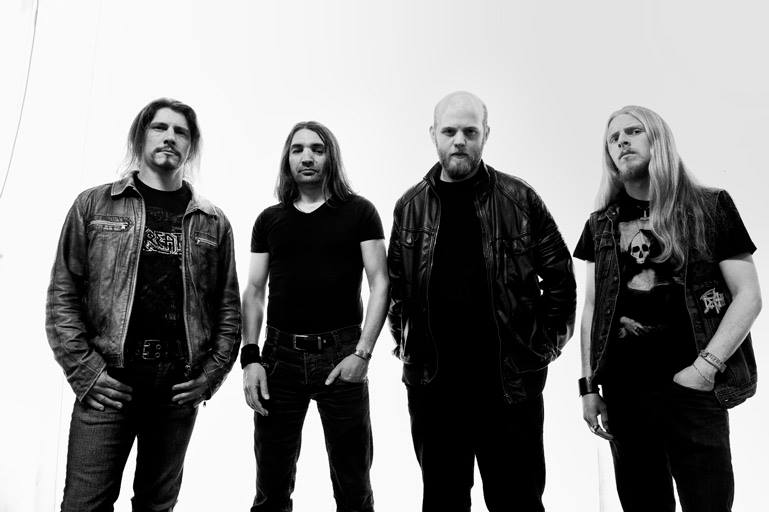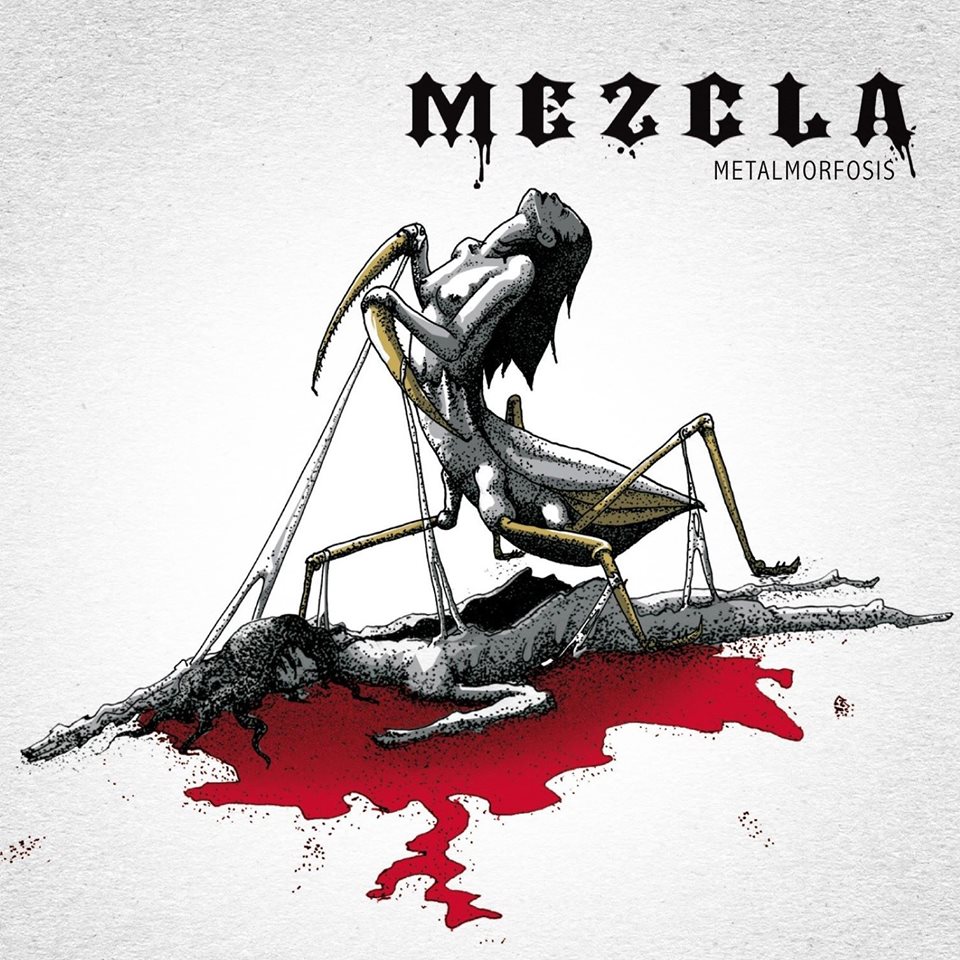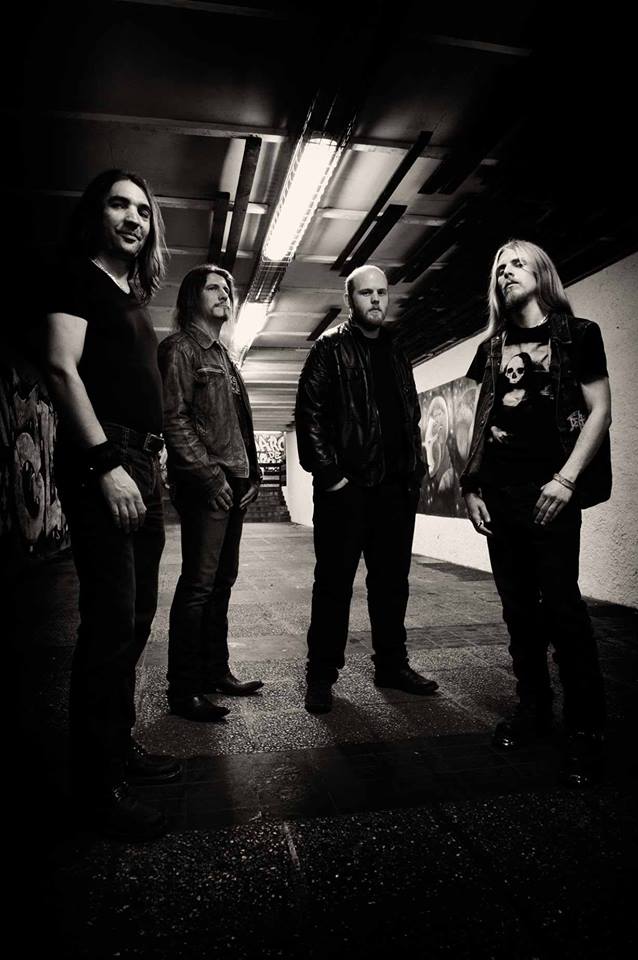
When one thinks of metal, the words fast and aggressive spring to mind… however the French band Mezcla have innovated and added Flamenco as well. The mixture of styles may sound strange but the result is quite impressive. Mezcla’s members Alexis and Thibaud explain it better…
 The band members are French but the lyrics are written in Spanish because one of your members is of Spanish origin. Do you all share this passion for all things Spanish?
The band members are French but the lyrics are written in Spanish because one of your members is of Spanish origin. Do you all share this passion for all things Spanish?
Alexis Munoz (vocals/guitar): That’s right I’m of Spanish descent, I’m also the founder of the band which explains the flamenco influence in our music. Flamenco isn’t necessarily a passion for all the members of the band, it’s the way we integrate it into our music that’s interesting.
Thibaud (drums): I know fairly little about Spanish culture but Alexis does his best to educate us!
Flamenco Death Metal is unique for sure. How did you come up with the idea of mixing death metal with flamenco? Are you fans of Flamenco? Do you dance it?
Alexis : As I said, I’m the flamenco aficionado, I was brought up to it. I discovered Death Metal during my adolescence after hearing bands like Iron Maiden or Metallica. So mixing the two came to me naturally, it gives us a unique identity, especially regarding the harmonic rules characteristic of this style of music. We don’t dance it but we often have a professional dancer with us for some of our acoustic shows.
The name of the band means Mix in Spanish and these two genres are so unthinkable to mix that the band turns out to be quite unique. Has this uniqueness granted you many opportunities?
Alexis : What really opened doors for us was the inclusion of acoustic music in our set. That allowed us to touch people who maybe weren’t into metal. Flamenco and metal aren’t as far apart as one might think; they both speak of drama, sadness and violence, and they both have a sound which isn’t always easy to access at first.
Thibaud : The mix of the two intrigues people and I think that let’s them coming and listening to our music even if they don’t like metal.
Who are your biggest musical influences? How much impact did they have in Mezcla’s sound?
Alexis : We have so many influences. The much-lamented Paco de Lucia contributed a lot on the flamenco side. Apart from him, I’d say that we all like bands such as Death, Opeth and Iron Maiden for their melodic and progressive styles. Listening to these bands made us want to play with aggressiveness and melody at the same time, while keeping the harmony by avoiding low tuning.
Mezcla has been around for 15 years. What’s the best thing that has happened to Mezcla in this time? And the worst?
Thibaud : I wasn’t in the band at the beginning, I can only speak for the last 5 years. I think the recording of the last album was a great moment for all of us as it really helped us to get to know each other better. It reinforced the band’s cohesion and that had a knock-on effect on our live performances. The worst I can remember was a gig where we weren’t paid, fed, or defrayed and we were treated with total indifference…
Your latest album, released in 2016 was “Metalmorfosis”. Why this title?
Alexis: It’s a play on words with “metal” and “metamorphose”. It talks about the incredible experience of discovering the world of metal music. To me it was an absolute metamorphose. Doors opened and an art that I didn’t know before was introduced to me. It keeps on giving me a real pleasure today. I think it’s the same feeling for the other band members.
 What are the lyrical themes you deal with in the 9 tracks of “Metalmorfosis”?
What are the lyrical themes you deal with in the 9 tracks of “Metalmorfosis”?
Alexis : “Criaturas Indeseables” evokes coackroach’s life that almost everyone hate because we associate them to insalubrity and invasion, and we considerate them as parasites. However, who is the one who invades earth imposing his dogmas? Who is the real parasite? That’s the parallel we have done between insects and human species...
“Sangre y Arena” denounces brutality of bullfighting, it’s one of the two texts that gets out of the album’s theme. It was important for us to broach this subject which is directly in relation with a side of Spanish culture we totally disapprove.
“Mantis Religiosa” talks about this famous and terrible predator insect which female eats male during coupling. At the end of the track, the mantis looks like a woman...
“Luciérnaga” it’s a kind of tribute to dear people who were deceased. In this text, they take the shape of fireflies which shine in obscurity as small comforting lights.
“Entomofobia” is an instrumental interlude, composed as a form of labyrinth. Oppressive, mysterious and sometimes liberating emotions succeed to each other to take us to the second part of the album.
“Otra Dimension” relates the story of someone who wakes up from a nightmare in which he looks like miniaturised and faces two awful monsters in the fauna of insects.
“Esfinge de la Calavera” evokes this formidable butterfly who comes from Africa to Europe to plunder honey in the hives. It has morphological features absolutely incredible that allows it to attack and protect itself against its enemies.
“L’Usurpateur” is the second track that gets out of the album’s theme, talking about disappointement we feel towards the ones who rule countries. They promise so many beautiful things that we fell sometimes into their trap.
“Metalmorfosis” broaches our passion for metal music and, at the same time, denounces music industry. In fact, from the earliest day we are forced into a cultural dogma which tells us what to like, what to listen to on the radio, and what to watch on television. Most of the medias are into this poisonous conditioning which occults reality keeping bringing up always the same things.
 Do you actually use Flamenco guitar riffs (or whatever they are called) in your tracks?
Do you actually use Flamenco guitar riffs (or whatever they are called) in your tracks?
Alexis: Yes certainly. The tracks Mantis Religiosa, Criaturas Indeseables and Metalmorfosis use flamenco scales notably in their use of the Major Phrygian, the founding tonality of flamenco.
This album has an official video for “Criaturas indeseables”... how did people react to it? Do you usually get any feedback from your fans?
Thibaud: It was very well received. The fact that it was scripted and didn’t just consist of shots of the band playing was very well appreciated. Quite a few people discovered the video live when we played at our release party at Le Silex (Auxerre). Thanks again to Samuel Lery-Maudens and the collective Cinémacadam for the direction!
Did Kafka’s The Metamorphosis inspire you somehow for this album?
Alexis : You’re not the first person to ask that question and I’m ashamed to say that I still haven’t read the book! The story that inspired the song was in fact the short story by Dino Buzzati, Douce Nuit. It tells of the violence and carnage between insects in a quiet garden at nightfall.
In 2014, you released the acoustic album “¿La Victoria de la Vida?”... how did you come up with the idea?
Alexis : We wanted to go on a radio show where you have to play acoustic and, more than that, I wanted to go in this direction with Geoffroy (guitar). It was only in 2012, with the arrival of our new rhythm section Thibaud (drums) and Guillaume (bass), that it became possible.
Of all the tracks in your catalogue, which is the one that best represents the band? Why?
Alexis : I think the track Mantis Religiosa is the most typical of our music. It’s entirely built upon a flamenco mode; a quiet passage in the song perfectly underlines that. There’s also the aggressiveness and speed of death metal in the track.
Thibaud : Yes this track is very representative of our style with its accelerations and changes of rhythms, its guitar solos…It’s the same with the song Metalmorfosis and its elaborate structure that characterises the kind of music we like to write; lots of surprises and unlikely sequences.
 In your opinion, what sets Mezcla apart from all the other metal bands?
In your opinion, what sets Mezcla apart from all the other metal bands?
Alexis: We play with a relatively high-pitched tuning and often on high tonalities. We put a lot of time in to make sure our tracks are structured and staged so that they seem to tell a story, even if you don’t understand the words. The Spanish singing and the flamenco touch round the whole thing off and make us stand out.
Are you already working in material for an upcoming album?
Alexis: Yes we’re working on an acoustic/flamenco album that should be out in may 2018. We’re hoping to improve the production and the musical construction.
Thibaud: And we’re also working on some compositions for the next metal album!
France is home to many well-known and awesome metal bands. How easy/complicated is it for a smaller band to get the opportunity to show case their material?
Thibaud: It’s quite difficult to find a lot of gigs in France, even if there are many organisations and places that stand up for our style of music. It all helps to keep us going, we love the stuff we play!
Share a message with Pest Webzine’s readers.
Alexis and Thibaud: First, we’d like to thank you and everybody at Pest Webzine for the quality of your questions. We advise your readers to try our last album. It’s very carefully crafted in its composition, quite diverse and needs several listens to appreciate its full effect!
If anyone wants to welcome us for gigs, get in touch and contact us using Facebook or sending us an email. It’d be a pleasure!
Interview by Sónia Fonseca
September 2017